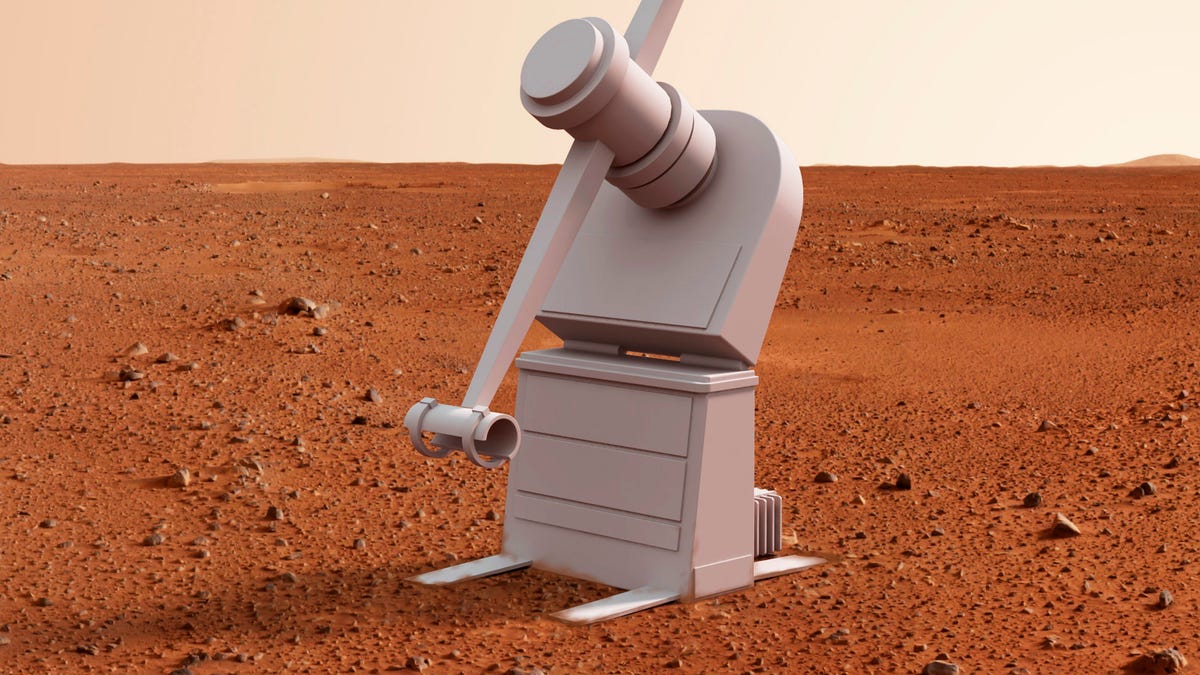
In February 2013, an asteroid about the size of a house punched its way through Earth’s atmosphere and broke apart over the city of Chelyabinsk, Russia. The blast was so strong, it left a bright streak in the skies and triggered a powerful shockwave, shattering glass and resulting in the injury of over a 1,000 people.
Sure, it wasn’t armageddon, but even asteroids as small as Chelyabinsk—which measured roughly 62 feet (19 meters) across—can cause some major damage to Earth and are more likely to pass through the inner Solar System than their larger counterparts.
Advertisement
A California-based nonprofit is gearing up to fight these smaller, albeit more common, threats by designing a new asteroid deflection system that would use the space rock’s own regolith to alter its trajectory away from Earth.
“We were looking at objects of similar size [to the Chelyabinsk asteroid] that could occur in our lifetime,” Nahum Melamed, a project leader at The Aerospace Corporation, told Gizmodo in an interview. “And we have shown that we can deflect them with that system over about a few weeks of operation.”
Advertisement
Advertisement
Melamed was inspired by SpinLaunch’s suborbital accelerator, a giant, 165 foot tall (50 meters) kinetic launch system in Spaceport America, New Mexico, that spins payloads at 10,000 g’s before flinging them to suborbital heights. The accelerator successfully catapulted a NASA payload in October 2022.
“How can I use this system to stop an asteroid?” Melamed recalls asking himself when he was invited by SpinLaunch to give a talk on planetary defense a few years back. The idea is to create a simplified version of the suborbital accelerator that can be launched to rendezvous with a near-Earth asteroid.
Once it’s landed on the asteroid, the centrifugal system would anchor itself onto the space rock and begin collecting small amounts of regolith (around 20 pounds at a time) and fling them into space. “By pushing it away from the asteroid, the asteroid will recoil and will get deflected by a tiny bit,” Melamed said. “So over time, by repeating the process again and again over weeks and months, we should be able to deflect the asteroid.”
The centrifuge is a fairly simple system that runs on electrical power, so it could hypothetically operate forever. Smaller asteroids between 30 to 60 meters could be deflected within a matter of weeks while larger asteroids may take months, according to The Aerospace Corporation.
Advertisement
The researchers behind the new planetary defense concept argue that it would be easier to execute compared to more complex systems, namely NASA’s DART mission. On September 26, 2022 the DART spacecraft slammed directly into an asteroid, successfully altering its orbit by 32 minutes.
“This approach is like giving a punch to the asteroid and it gets deflected in one shot,” Melamed said. “The mission is complicated, it would take a lot of time to develop the spacecraft and get it out to space and there is no guarantee of success.” The centrifuge approach, on the other hand, helps mitigate the potential risk of an incoming asteroid by adding a sustainable and repeatable slow-push strategy to the planetary defense toolbox, according to the Aerospace Corporation.
Advertisement
When it comes to protecting the Earth from cosmic threats, it certainly wouldn’t hurt to have more options. “It’s great to keep thinking of new ways to deflect asteroids,” Seth Jacobson, an assistant professor of planetary sciences at Michigan State University, told Gizmodo in an email. “This approach is like turning the asteroid’s regolith into a kind of rocket fuel and it’s very creative.”
The anchored centrifuge would eject the asteroid’s regolith at speeds of 0.6 to 1.2 miles per second (1 to 2 kilometers per second) in the direction of the asteroid velocity vector to divert the space rock away from Earth.
Advertisement
The Aerospace Corporation wants to test its planetary defense in two years through an Earth-based trial, building a small prototype that can be tested in the lab first. If all goes well with the Earth-based test, the company wants to test its centrifugal system on the Moon, chucking pieces of regolith from the lunar surface into space. “If this is successful, then the next phase will be to develop some sort of an operational means of developing that system for use for defending the planet on a routine basis,” Melamed said.
As it stands today, there are no known asteroids that pose a threat to Earth within the next 100 years. NASA keeps a close watch on near-Earth objects; the space agency is currently monitoring 28,000 space rocks.
Advertisement
In the meantime, the Aerospace Corporation figured it could use its centrifugal system for commercial purposes as well, potentially mining resources from asteroids in space. “I think the best use of the system will be by using it for a dual purpose,” Melamed said. “It could be used for extraction of useful materials from asteroids and diverted to deflection of a threatening asteroid in time of need.” For this method, the material that’s being catapulted from the asteroid, or possibly the Moon, would then be captured by some form of orbiting spacecraft.
“That way, the system isn’t just useless for very long periods of time until maybe one instance in the distant future where it will need to be used,” Melamed added.
Advertisement
For more spaceflight in your life, follow us on Twitter and bookmark Gizmodo’s dedicated Spaceflight page.
Services Marketplace – Listings, Bookings & Reviews